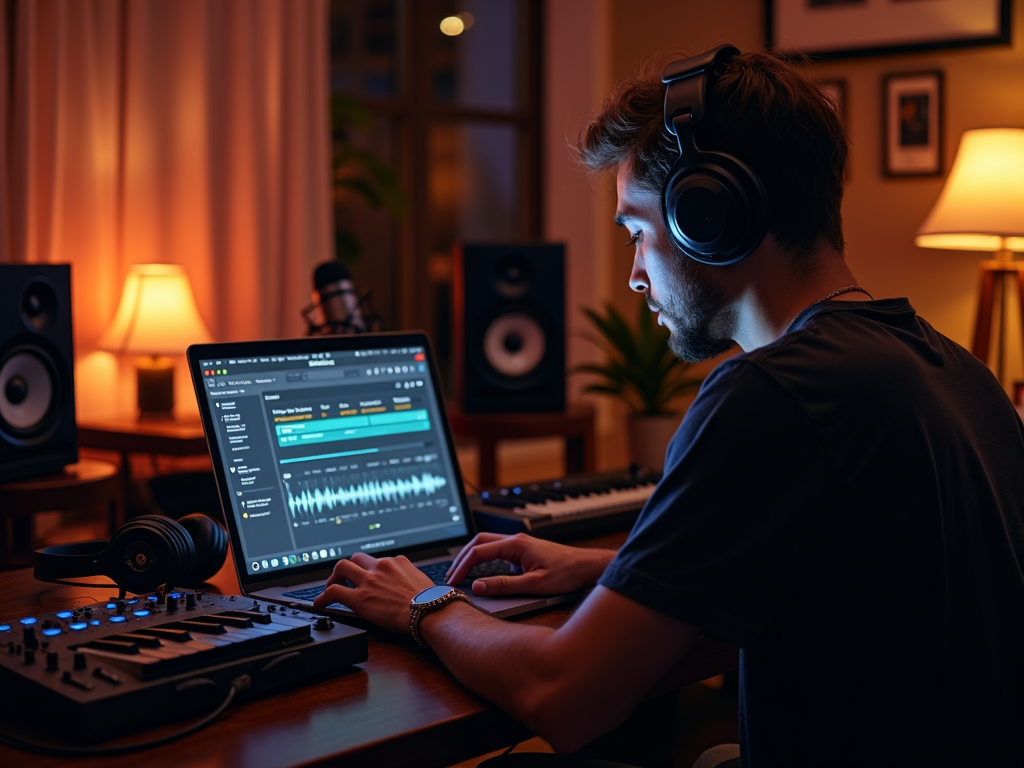For a long time, releasing music used to be something only major record labels could really do well. They had the money, the contacts, and the platforms to make sure a song reached listeners all over the world. If an artist wasn’t signed, their music often stayed unheard.
That’s not how things work anymore.
Today, music distribution is open to everyone. Independent artists, small labels, and even people running their own music services can upload songs to platforms like Spotify, Apple Music, Amazon, and more. You no longer need to be backed by a giant company. You just need the right tools.
What Music Distribution Means
Music distribution is how a song gets from the artist to the listener. It’s the process of uploading a track to a service like Spotify or Apple Music, making sure all the song information is correct, and tracking plays and payments once it’s live.
Back when everything was sold on CDs or vinyl, distribution meant physically shipping music to stores. Now, it’s all digital. Tracks are uploaded online, and listeners stream them from wherever they are.
This shift to digital opened the door for more people to get involved in the music business.
Big Labels Still Exist—But They’re Not the Only Option
Major labels still have power. They can promote a song to a massive audience, get radio airplay, and set up deals with influencers and media. But those services come at a cost. Artists give up control, sign contracts, and usually earn less from each stream or sale.
That’s one reason why so many artists now choose to go independent.
When you work with a digital music distributor, you keep more control. You choose your release dates. You manage your track details. And you get paid directly for your music. This model fits artists who want freedom and also businesses that want to help artists release music under their own name.
What White Label Distribution Does Differently
Some companies don’t just release music—they build platforms that let other people run their own music distribution services. These are called white label platforms. With a white label system, someone can offer music distribution under their own brand without building the technology from scratch.
For example, My Client Zone Music Distribution offers a system that allows users to launch and manage their own music distribution platforms. It handles uploads, payments, support, and reports—all under a custom brand. That means anyone can start their own distribution service and give artists a way to release music professionally.
This setup is helpful for producers, label owners, or music marketers who already have a network of artists and want to offer more services.
Independent Artists Are Driving the Change
The rise of independent artists is one of the biggest reasons music distribution has changed. These artists don’t always want a label. They want to record music at home, upload it themselves, and connect with fans directly. And now, they can.
With affordable recording tools, social media, and streaming platforms, artists can handle everything from production to promotion on their own. What they need is a reliable way to get their songs on the big platforms—and that’s where modern distributors and white label platforms come in.
Even younger artists just starting out can now upload songs, track streams, and get paid, without needing anyone’s approval. That kind of access would have been nearly impossible a decade ago.
Music Businesses Are Getting Smarter About What They Offer
People who work in music—like managers, producers, or promoters—are starting to do more than just the usual stuff. A lot of them are finding new ways to help the artists they work with. One of the biggest things they’re doing now is offering music distribution themselves.
Before, they had to send artists to outside platforms to upload songs. Now, with white label tools, they can run their own branded distribution service. That means artists can upload and manage their releases right through someone they already trust—like their label or manager.
They don’t need to build the tech from scratch or hire developers. Everything is already set up. They just use a platform that works behind the scenes and put their own name and logo on it. It’s simple, saves money, and makes their business way more useful to the artists they support.
Distribution Is No Longer Just a Back-End Task
One big shift is how people think about distribution. It used to be something in the background—something you only thought about after the music was finished. Now, it’s part of the plan from the beginning.
Artists and music businesses talk about release dates, pre-saves, and platform strategies early in the process. Distribution isn’t just about delivering music. It’s about launching it in the right way.
That’s why having access to solid distribution tools matters so much. Whether it’s through a major distributor or a white label platform, having control over that part of the process helps artists build better careers and helps businesses grow.
What to Take Away
Music distribution is no longer just for the biggest companies with the biggest budgets. Thanks to digital platforms and white label services, anyone with the right idea and the right tools can get music out to the world.
Independent artists have more freedom than ever. Small businesses can create full distribution platforms. And the entire process—once limited to a few major labels—is now open to almost everyone.
If you’re working with music, or helping others do the same, there’s no need to wait for a record deal. The tools are already there. You just have to use them.



